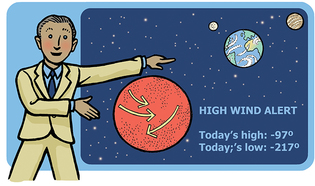 loading
loading
FindingsNoted Gregory NemecView full imageThe weather on Mars, Yale researchers have found, has at least one similarity to that of Earth: dust storms on the red planet and nor’easters in New England recur about every 20 days. This information could aid future Mars missions. “Martian dust storms endanger robotic missions already,” says Michael Battalio of the Department of Earth and Planetary Sciences. Next, Battalio will try to forecast Martian weather during the upcoming dust-storm season. Indigenous nations across the US have lost 98.9 percent of their land base since European settlers first laid claim to the continent. A team led by environment school professor Justin Farrell found that that dispossession has made Native communities especially vulnerable to climate change. Indigenous peoples, forced out of their historical lands and onto lands with fewer natural resources, are more exposed to climate hazards: extreme heat, greater wildfire risks, and more. Farrell hopes the information can be used to right inequities, mitigate risks, and improve Indigenous peoples’ lives.
The comment period has expired.
|
|